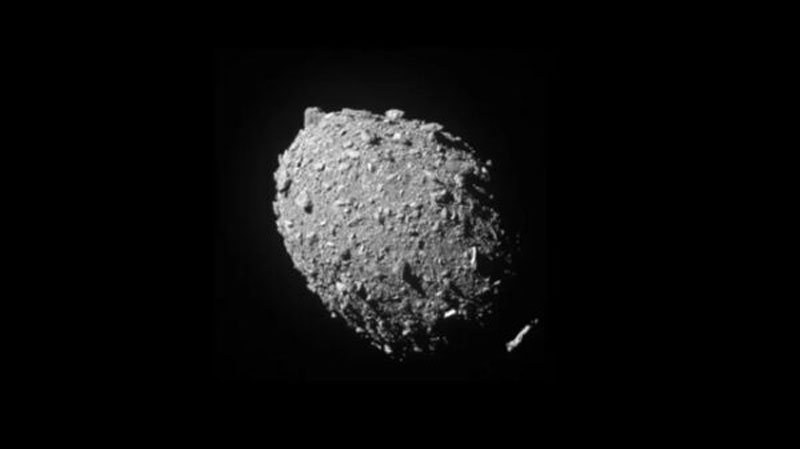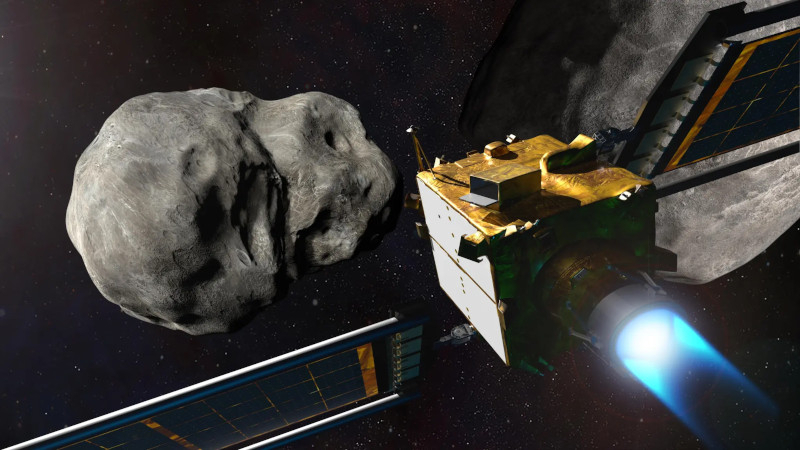The Planetary Science Journal published the work of European scientists who simulated the debris ejection cone of the Dimorph asteroid, which was hit by the NASA DART kamikaze probe in September 2022. The experiment was supposed to provide reliable data on the possibility of influencing the trajectory of an asteroid dangerous to the Earth. The dimorph was not a threat. It became a testing ground for testing the shock deflection theory.

Image source: NASA, ESA
The experiment was a success – the NASA probe diverted the 160-m asteroid from its original trajectory. The Dimorph asteroid orbits the larger Didymus asteroid, which reaches 780 m in diameter. The change in orbit is noticeable even when observed from Earth, but the exact parameters will be measured later when the European mission probe arrives at the system of these double asteroids in September 2026. Hera” (Hera).
The NASA DART probe’s impact on the asteroid provided scientists with a wealth of accurate data to improve models of how celestial bodies collide in space. The dimensions, shape and mass of the impact instrument were precisely known, as was the place and time of the experiment. Accurate knowledge of the initial data also makes it possible to simulate the behavior of asteroid debris that was formed as a result of the impact.

Artist’s impression of the DART probe and the Dimorph asteroid
At the moment the NASA kamikaze probe fell on Dimorph, the Italian cubesat LICIACube watched from the side. It was this data that European scientists used to model the debris ejection cone. The cubesat was able to identify many asteroid fragments in the centimeter size range. He also measured their speeds, which fell in the range from several tens to hundreds of meters per second. The direction of the expansion cone was also known, which together provided redundant data for calculating the further movement of the Dimorph debris cloud throughout the Solar System.
Simulations on NASA’s supercomputer showed that clouds of Dimorph fragments will reach not only Mars, but also Earth. And this will happen soon enough – within the next ten years. Moreover, the first fragments of the affected asteroid will reach Earth within seven years. However, they will be so small that they will not even manifest themselves as meteors. It will take about 30 years before the cloud of Dimorph fragments begins to regularly manifest itself as a regular stream of meteors, the sizes of which start at 30 microns, and which leave their mark in bright trails in the sky.
Scientists have provided all the data so that space surveillance services know when and in what part of the sky “dimorphids” will begin to appear. Therefore, there will be no error in their identification. Something similar will happen on Mars, although in a few thousand years large enough fragments of Dimorph may reach Mars to form 300-m craters on its surface.
According to calculations, particles ejected from the impact with speeds below 500 m/s could reach Mars in about 13 years, while particles ejected with speeds above 1.5 km/s could reach Earth in just seven years.